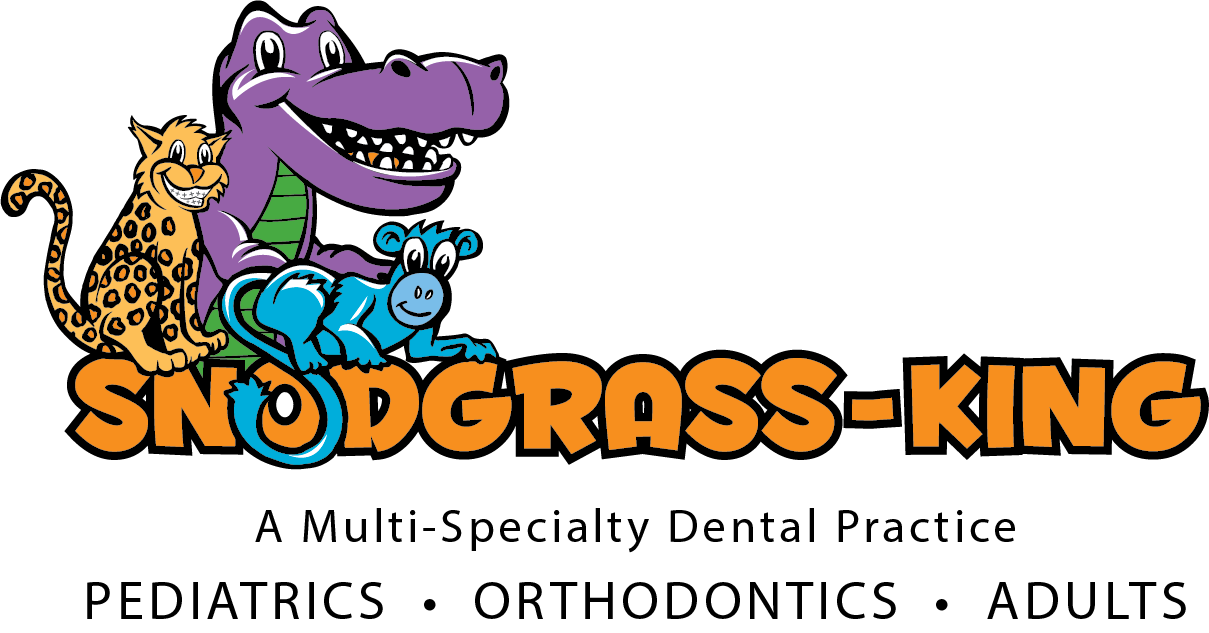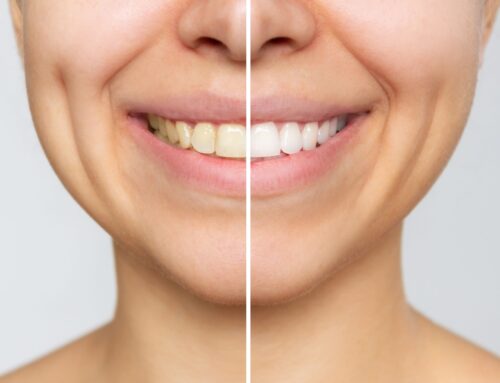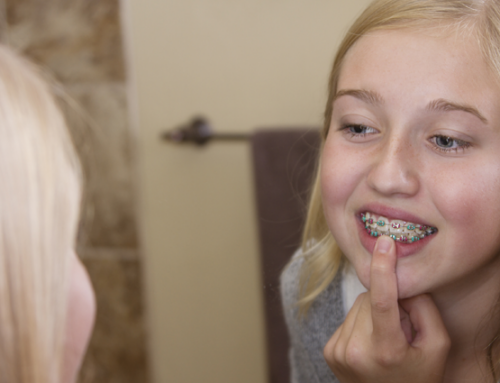How To Prepare Your Child for Braces
Once your child’s baby teeth have fallen out and permanent teeth have grown in, they may be ready for braces. Though, some kids may need early orthodontic treatment to fix misaligned bites and impacted teeth before all their baby teeth are out.
If they’re ready, your dentist will likely refer you to a trusted pediatric orthodontist who corrects improper tooth and jaw alignment with braces. However, for braces to straighten crooked teeth without a hitch, it’s essential to take proper care of your child’s braces and teeth.
To some kids, getting braces might be a normal part of growing up. Maybe a sibling, cousin, or even a friend has had braces before. Maybe they’re even excited about customizing their own with different colored rubber bands.
Other kids, who fear the dentist, may also fear getting braces for their misaligned teeth. Thankfully, just knowing what to expect with braces can make the process a much easier experience for all ages. After all, there isn’t an age limit for braces!
Let’s take a closer look at how to prepare your child for braces, proper care, and what to expect!
Help Your Kids Understand Why They Need Braces
Most kids have either heard of braces or seen their friends with braces before they get their own. They may have also heard about the negative side of braces. Some may have heard that wearing braces requires changing eating habits, saying no to favorite foods, and sometimes putting up with on and off mouth pain for one to two years or more! They might even be worried about the way they will look.
As a parent, you need to help them understand the importance of proper orthodontic treatment. For example, braces can prevent early loss of primary teeth, fix an overbite or underbite, make room for overcrowded teeth, close gaps between teeth, and fix any issue of biting or chewing food improperly. Plus, their beautiful smile will shine once they have straight teeth.
How Do Braces Work?
Braces work to align and straighten the teeth through the use of mild pressure. The wire that holds the brackets that are glued to the teeth help to guide, and shift, teeth into alignment.
Before Getting Braces
Not all kids need braces, but the thing is teeth just don’t always grow straight or evenly. Unevenly spaced teeth are one of the main reasons why kids (and adults) need braces. Sometimes children have different sized upper and lower jaws, causing malocclusion (overbite or underbite) that needs fixing.
Today, braces have become a perfectly refined process. While metal braces are still used, patients may also have the option to get clear braces. Fun colored rubber bands on traditional braces are still a kid favorite, though.
There is some necessary prep work before the braces are actually applied. First, x-rays will need to be taken along with teeth impressions or molds. This prep helps your family orthodontist to create the best possible treatment plan for getting straight teeth.
Are There Risks to Getting Braces Too Early?
While it might be tempting to start orthodontic treatment as soon as possible, getting braces too early can bring its own set of challenges. If your child still has permanent teeth left to come in, beginning braces before these teeth erupt may disrupt their alignment plan. As new teeth grow in, they might shift the already-straightened teeth out of place—sometimes leading to a second round of braces down the line.
That’s why orthodontists typically evaluate the timing carefully, balancing the need for early intervention with the likelihood of smoother, more effective results. It’s always wise to follow your orthodontist’s recommendations for the best long-term outcome for your child’s smile.
Types of Braces: Which Is Right For Your Child?
When it comes to straightening teeth, today’s orthodontic options offer a little something for everyone—whether your child wants to make a statement or keep their braces under the radar.
Traditional Metal Braces
These are the classic braces most people picture: sturdy metal brackets attached to each tooth, connected with wires and secured by rubber bands. Kids love picking out their favorite rubber band colors at each appointment, and orthodontists periodically adjust the wires to gently guide teeth into place.
Ceramic Braces
Ceramic braces work just like the metal ones, but the brackets are made of clear or tooth-colored materials. This makes them less noticeable, so they’re a popular choice for kids (and parents!) who want a subtler look while still benefiting from reliable, effective treatment.
Lingual Braces
Want an “invisible” option without going clear? Lingual braces are fixed to the back (tongue side) of the teeth instead of the front. They function similarly to traditional braces, but they’re completely hidden from view—perfect for those who want to keep their orthodontic journey top secret.
Invisalign and Clear Aligners
For an even more discreet (and removable) solution, clear aligners like Invisalign are also available. These are custom-molded, clear plastic trays that fit over the teeth and gently nudge them into place. Every few weeks, a new aligner is provided to continue the progress. However, they require a big commitment: aligners need to be worn at least 22 hours per day, and it’s easy for kids to misplace or forget them after taking them out to eat or brush.
Each type of braces comes with its own set of advantages. Your orthodontist can help you choose the one that fits your child’s needs, personality, and lifestyle best.
How Are Braces Places on The Tooth?
After checking in and a friendly hello, the orthodontist’s assistant will make sure your child’s teeth are cleaned and dried. Once cleaned, special glue is placed to cement the brackets to the teeth. Once the brackets are in place, the wires are placed and rubber bands are used to secure them.
Overall, it generally takes about an hour or two for braces to be applied. And because there are no drills or needles, your child should feel no pain during the procedure.
Tips on Taking Care of Braces
Properly caring for your child’s braces prevents unnecessary repair and replacement, which can end up costing you more. The sooner you start preparing your child for the extra care they’ll be facing once they get braces, the easier the transition will be.
Teach Your Child About Daily Dental Care
The biggest worry for orthodontists is poor oral hygiene since it can lead to enamel decalcification and tooth decay. During an orthodontic evaluation, your orthodontist will likely ask you about your child’s hygiene habits before deciding to put on braces to determine if they are a good candidate. If your child doesn’t take good care of their teeth, your pediatric orthodontist may wait until your child improves their hygiene.
Your child needs to brush their teeth after every meal and each time they eat anything sugary. Removing leftover food particles and bacteria is crucial to preventing cavities, stains, decalcification, and other dental issues when wearing braces.
Here’s what decalcification from poor hygiene looks like with braces:
Brush and Floss Daily
Since braces easily catch food between the teeth and wires, kids must diligently brush and floss between meals. If your child does not take care of their teeth properly while they have braces, their teeth will look stained after removal. Unfortunately, regular floss can be hard to use with traditional braces, so we suggest getting a special floss that can thread through the wires.
Prepare Your Home for Braces
You’ll need to have extra dental care items once your child has their braces on. If you buy these items ahead of time, your child will start with proper dental care with braces as soon as they have them on.
Your child will need:
- Orthodontic or dental wax
- Travel-size toothbrushes
- Travel-size toothpaste
- Floss
- Floss threader
- Mouthwash (depending on your child’s age, you may need to look for mouthwash specifically for kids)
You may always want to consider replacing the foods in your kitchen that would be harmful to braces with foods that are braces-friendly ahead of time. If you have more questions, ask one of our orthodontic Tennessee professionals for an extensive list of what foods are good and bad for braces.
Pain Management and Relief from Braces
After your child gets their braces, be prepared for your child to experience discomfort or pain in their teeth within the first 24 to 48 hours. Discomfort or a dull ache is completely normal to feel after the application of braces since there is now pressure on the teeth from the bracket and wire. The soreness and discomfort can last as long as a week, but there are ways to alleviate or lessen the pain during this time.
Be sure to have:
- Over the counter pain medicine such as Advil, Motren, or Tylenol.
- Ice packs to apply to the face
- Numbing ointment to apply to the gums
While discomfort and soreness is normal to experience after getting braces, it is not normal to experience persistent, severe pain accompanied by signs of infections or broken brackets or wires. If your child is experiencing any of these factors, please contact their orthodontist immediately.
Stock Up On Soft Foods
Your child’s mouth will most likely get sore during the first week that they have braces. This pain will go away in time as the teeth begin aligning properly. Prepare for this by buying or making plenty of soft foods they can easily chew and swallow without much effort.
Some food options for braces include:
- Mashed potatoes – try sweet potatoes for extra vitamins!
- Rice
- Pasta
- Yogurt
- Steamed vegetables
- Soup
- Smoothies
- Ice cream
- Oatmeal
- Bananas
- Eggs
- Applesauce
Soreness may occur after routine adjustments, so it will be good to keep these foods on hand to ensure your child can eat with minimum discomfort.
What Foods to Avoid With Braces
Braces can make eating certain foods difficult, and some foods can damage braces. More importantly, rubber bands that keep brackets and wires in place tend to break off when eating sticky foods.
The main foods your child should avoid are hard, chewy, and sticky foods. If eaten, these types of foods can damage the braces, cause tooth decay, break the brackets off of the teeth, tear off the rubber bands, shift the wire alignment, or otherwise cause malfunctions.
Foods to avoid while wearing metal braces:
- Chewy caramels
- Gum
- Sticky candy
- Hard candy
- Sugary soda
- Sugary juice
- Popcorn
- Ice
- Corn on the cob
- Whole apples
Prevent Sores with Dental Wax
The wires may extend past the bracket on the last tooth during the tightening and straightening process. This movement is expected but often uncomfortable. Dental wax provides the perfect solution by creating a protective barrier between the bracket and your child’s mouth.
When you visit one of our pediatric orthodontists near you, we can provide small cases of dental wax to prevent mouth sores. Be sure to have enough wax both at home and for your child to take with them.
After Getting Braces
How Long Will My Child Need to Have Braces?
How long braces are worn is dependent on the patient’s mouth, needs, and progress during treatment. But generally, our patients can expect to wear dental braces from between 18 months to 3 years or until the teeth are properly aligned.
Taking Care of Your Braces Will Reduce How Long You Have to Wear Them
Keep a strict dental care routine while you have braces. It’s essential to keep them clean while making sure your child follows all of their orthodontist’s instructions. If your child does not follow up on their “homework” or home care instructions, it can mean they’ll be wearing braces for longer than expected.
The Benefits of Braces
The main benefit of getting braces is a picture-perfect smile your child can enjoy for the rest of their life. But the benefits don’t stop there! Benefits of braces include:
- Less damage to teeth due to proper alignment
- Less wear and tear
- Less chance of needing additional restorative dental procedures
- Improved bite
- Improvement of speech
- Improvement of facial symmetry
Signs Your Child May Need Braces
While only an orthodontist can determine if your child needs braces, there are a few common signs that someone may benefit from braces. These signs include:
- Overlap of teeth
- Overcrowding of teeth
- Overbite
- Underbite
- Unalignment of teeth
- Spacing of teeth
- Speech issues
- Trouble biting
When Should You Bring In Your Child For Their First Orthodontist Visit?
As you’ve probably heard before, it’s always best to address orthodontic issues as early on as possible. Since children’s teeth are more malleable at a younger age, it’s a good idea to tackle braces early on. Early orthodontic care will ensure that the treatment is as easy and effective as possible. Additionally, since braces are now fairly common among young kids, it’s easiest for the child to get braces at a younger age when their peers are going through the same changes.
Keep an eye out for anything that might seem concerning about your child’s teeth. For example, an overbite, underbite, significant gaps or overcrowding of teeth might be a reason to make an early appointment with an orthodontist. Certain breathing problems may also signify needing to take a trip to a pediatric dentist.
Can Adults Get Braces?
The short answer is yes. Adults can definitely get braces, although the process might be just a bit more complicated. Since adult teeth are already fully grown, straightening the teeth might take longer due to their density. If the adult has any oral complications such as gum disease, these factors might impact the process of getting braces as well. Aside from the timeline however, the overall process of getting braces will be relatively similar for adults as it is for children.
Many adults feel anxious when faced with the idea of getting braces at their age. It should be noted however, that these days there are more options than ever when it comes to braces. Minimally visible options such as clear aligners, ceramic braces, and self-ligating braces have been gaining popularity for good reason in recent years. Less visible, these options are great for adults who might not feel comfortable wearing full metal braces around the office.
Remember that braces aren’t forever – most adults only have to wear their braces for 18 to 26 months. This amount of time is a small price to pay for a lifetime of confidence and comfort. Especially when braces can help relieve jaw-related pains and headaches, resulting in a happier, more productive you.
What Can Happen If I Don’t Get Braces?
Left to its own devices, teeth misalignment can get increasingly worse. Rarely do misaligned teeth straighten out on their own. In minor cases, untreated misalignment issues are likely to lead to gaps between your teeth or occasional overlapping (or both). Crooked teeth will likely affect brushing and dental hygiene, possibly resulting in plaque buildup and cavities.
In worse cases, misaligned teeth can lead to an aching jaw and headaches, which could have a serious impact on your quality of life. Straight teeth, on the other hand, can make daily actions such as chewing much easier, with less strain being put on the jaw. Most importantly, straight teeth mean that when you bite down, your teeth clash less, reducing the wear and tear to your enamel.
On a more personal note, adults also frequently find that a better smile makes them feel more confident and happy. Surprisingly, misaligned teeth don’t impact just the way you see yourself but also how other people perceive you. Your smile really is a representation of yourself, so make sure that the representation is as bright and shiny as possible.
A Few Tips When Finding an Orthodontist
We know that choosing a new oral healthcare provider can be a lot of pressure, but here are a few standard things to keep in mind when searching:
- Education and Experience: You want the best of the best when taking care of your child’s or your own dental health. Make sure that the orthodontist you ultimately choose has had sufficient experience and formal education.
- Specialization: If you’re searching for a new dentist for your child, ensure that the provider you choose is certified in pediatric dentistry. Dental practices focused on children are often friendlier and better at dealing with young ones as well. It’s very important that kids feel comfortable with their dental provider.
- Availability: Depending on where you live, dental appointments can be hard to get. We’ve all had the experience of calling somewhere to get a same-week appointment, just to find out that the next availability is no earlier than a month from now. Start calling around as soon as you know you need to see a provider. Many dentist and orthodontic offices now also offer online appointment booking for patient convenience.
- Testimonials: It’s always great to ask around or see what past patients have said about the practice. These comments might give you some insight as to how capable the orthodontist is.
Another thing to keep in mind when searching for an orthodontist is which insurance plans they accept. To be on the safe side, it’s best to give the office a call and check that they accept your insurance. In some cases, it might also be a good idea to call up your insurance company and ask whether your specific plan covers braces. If that is the treatment recommended by your orthodontist, the office can usually print out a quote for you. Keep in mind that pediatric orthodontic coverage might differ from adult coverage with your insurance plan. Take some time to give the decision some thought (although don’t wait too long if the procedure is urgent).
Switching insurance plans or seeking out a secondary insurance plan is a possible option if you find that your insurance doesn’t cover the treatment that you need. Snodgrass-King currently accepts most dental insurance and discount plans, however, please feel free to contact us to verify.
FAQs About Braces
How Do I Remove Food Stuck in My Teeth with Braces?
If something is lodged between the teeth with braces, it can be removed with a floss threader to gently remove the particle. Rinsing your mouth afterwards can also help to remove any leftover food debris.
What is The Most Painful Day After Getting Braces?
Soreness is normal to experience in the hours following placement or tightening. The days where levels of soreness are the highest is between days 2 – 7 following placement or tightening of the braces. Most of this pain can be managed by over the counter pain medicine, ice packs, and softer foods.
How Often Do Braces Need to be Tightened?
Braces are tightened every 4 – 10 weeks depending on your treatment plan of the braces. Having a routine dental appointment to tighten your braces is crucial. The tightening of your braces helps to maintain the consistent pressure on the teeth, allowing the teeth to continuously shift properly.
Which Teeth are the Hardest to Move With Braces?
The most challenging teeth to move with braces are the molars and wisdom teeth due to their strong roots in the gum.
What are Alternatives to Braces?
For those who are not interested in braces due to aesthetic or length of treatment may be interested in alternatives to braces, such as:
- Clear aligners
- Veneers
- Ceramic braces
Get Braces at Snodgrass-King in Middle Tennessee
When you choose Snodgrass King for your child’s orthodontic needs, you will work closely with the staff, who will teach you all about your child’s braces and the process. If you have any questions about the process or anything else regarding your child’s dental care, reach out to Dr. Snodgrass and his pediatric dentistry team at Snodgrass-King. We will be happy to set you up with an appointment, so all your child’s dental needs can be taken care of.
It is extremely important for your oral health to schedule and attend regular check-ups with your orthodontist and dentist, as well as practice proper hygiene. So if your child needs braces, we encourage you to seek the best possible orthodontic care for yourself and your loved ones.
When you choose Snodgrass-King Orthodontics you choose “a smile to build a future on.” Use our online contact form to easily request an appointment. We’d love to answer all your dental-related questions and concerns.





